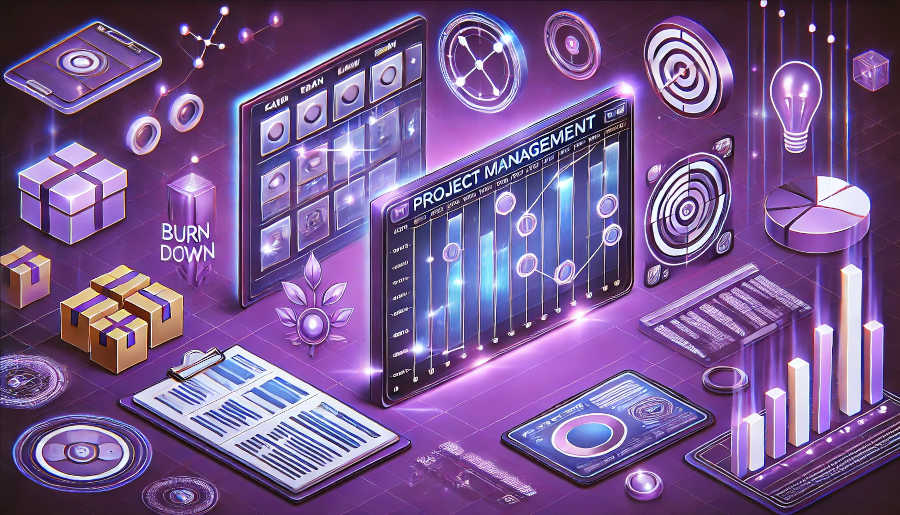The application of milestone plans in agile development requires a nuanced approach. Unlike traditional project management, where milestones are often rigidly tied to specific deliverables and deadlines, agile milestones must accommodate the iterative nature of the process. This means that milestones in agile projects are not just about completing tasks but also about evaluating progress, learning from feedback, and adapting plans accordingly. By incorporating milestones into agile frameworks, teams can maintain a balance between structure and flexibility, ensuring that they remain focused on delivering value while also being responsive to changing requirements. This article explores the strategic use of milestone plans in agile development, highlighting their benefits, challenges, and best practices.
The Role of Milestones in Agile Development
Milestones in agile development serve as critical checkpoints that help teams assess their progress and adjust their strategies as needed. Unlike traditional project management, where milestones are often tied to specific deliverables, agile milestones focus on achieving key outcomes or reaching significant stages in the development process. For example, a milestone might mark the completion of a sprint, the delivery of a minimum viable product (MVP), or the resolution of a major technical challenge. These milestones provide teams with opportunities to reflect on their work, gather feedback, and make necessary adjustments before moving forward. By breaking the project into smaller, manageable segments, milestones help teams maintain momentum and avoid becoming overwhelmed by the complexity of the project.
Another important role of milestones in agile development is communication. Agile projects often involve multiple stakeholders, including developers, product owners, and end-users, each with their own priorities and expectations. Milestones provide a common language for discussing progress and aligning goals. For instance, when a team reaches a milestone, they can present their achievements to stakeholders, demonstrate the value of their work, and gather input for future iterations. This transparency fosters trust and collaboration, ensuring that everyone involved in the project is on the same page. Moreover, milestones can serve as motivational tools, giving teams a sense of accomplishment and encouraging them to stay focused on their objectives.
However, it is essential to recognize that the use of milestones in agile development requires a shift in mindset. In traditional project management, milestones are often seen as rigid deadlines that must be met at all costs. In contrast, agile milestones are more flexible and adaptable, reflecting the iterative and incremental nature of the process. Teams must be willing to adjust their plans based on feedback and changing circumstances, even if it means revising milestone dates or redefining their scope. This flexibility is at the heart of agile development, and it is what allows teams to deliver high-quality products that meet the evolving needs of their customers.
Balancing Structure and Flexibility
One of the key challenges in applying milestone plans to agile development is finding the right balance between structure and flexibility. On one hand, milestones provide a sense of direction and help teams stay focused on their goals. On the other hand, too much rigidity can undermine the adaptability that is central to agile methodologies. To strike this balance, teams must approach milestone planning with a mindset that prioritizes outcomes over outputs. Instead of defining milestones based on specific deliverables, they should focus on achieving meaningful results that contribute to the overall success of the project. For example, a milestone might be defined as the point at which a feature has been tested and validated by users, rather than the completion of coding.
Another way to balance structure and flexibility is to use rolling wave planning, a technique that involves planning in detail for the near future while keeping long-term plans more general. This approach allows teams to adapt their plans as they gain more information and feedback, ensuring that milestones remain relevant and achievable. For instance, a team might set a milestone for the end of the current sprint, with a clear understanding of the tasks that need to be completed. At the same time, they might have a broader milestone for the end of the quarter, with the flexibility to adjust the scope based on what they learn during the sprint. This approach enables teams to maintain a structured framework while also being responsive to change.
Finally, it is important to recognize that milestones are not just about tracking progress; they are also about learning and improvement. In agile development, each milestone should be an opportunity for the team to reflect on their work, identify areas for improvement, and make adjustments to their processes. This continuous improvement mindset is central to agile methodologies, and it is what allows teams to deliver better results over time. By incorporating reflection and learning into their milestone planning, teams can ensure that they are not just meeting deadlines but also growing and improving as they work towards their goals.
Best Practices for Implementing Milestone Plans in Agile
To successfully implement milestone plans in agile development, teams must adopt a set of best practices that align with the principles of agility. One such practice is to involve the entire team in the milestone planning process. By engaging all team members in defining milestones, teams can ensure that everyone has a shared understanding of the project's goals and priorities. This collaborative approach also fosters a sense of ownership and accountability, as each team member is invested in the success of the project. For example, during sprint planning meetings, teams can discuss potential milestones and agree on the criteria for achieving them. This ensures that milestones are realistic and achievable, based on the team's collective expertise and capacity.

Another best practice is to keep milestones visible and transparent throughout the project. Agile teams often use visual tools such as Kanban boards or burndown charts to track their progress, and milestones can be integrated into these tools to provide a clear picture of where the team stands. For instance, a milestone might be represented as a specific point on a burndown chart, indicating when a certain amount of work is expected to be completed. By making milestones visible, teams can stay focused on their goals and quickly identify any potential roadblocks. Additionally, transparency helps stakeholders understand the team's progress and provides opportunities for timely feedback and support.
Finally, it is crucial to regularly review and adjust milestones as needed. Agile development is inherently iterative, and teams must be prepared to adapt their plans based on new information, changing requirements, or unexpected challenges. This means that milestones should not be set in stone; rather, they should be seen as flexible guidelines that can be revised as the project evolves. For example, if a team encounters a technical issue that delays progress, they may need to adjust the timeline for a milestone or redefine its scope. By being open to change, teams can maintain the agility that is essential to their success while still benefiting from the structure that milestones provide.
Conclusion
The application of milestone plans in agile development offers a powerful way to balance structure and flexibility, ensuring that teams remain focused on delivering value while also being responsive to change. By defining meaningful milestones, involving the entire team in the planning process, and maintaining transparency and adaptability, teams can enhance their agility and achieve their project goals more effectively. Milestones provide a framework for measuring progress, communicating with stakeholders, and fostering a culture of continuous improvement, all of which are essential to the success of agile projects.
At the same time, it is important to recognize that the use of milestones in agile development requires a shift in mindset. Teams must be willing to embrace flexibility and adaptability, even if it means revising their plans or redefining their goals. This willingness to change is at the heart of agile methodologies, and it is what allows teams to deliver high-quality products that meet the evolving needs of their customers. By integrating milestone planning into their agile practices, teams can strike the right balance between structure and flexibility, ensuring that they remain focused on their objectives while also being responsive to new opportunities and challenges.
In conclusion, milestone plans are not just a tool for tracking progress; they are a strategic approach to managing agile projects that can help teams achieve their goals more effectively. By adopting best practices for milestone planning, teams can enhance their agility, improve their communication, and foster a culture of continuous improvement. Whether you are new to agile development or an experienced practitioner, the thoughtful application of milestone plans can help you navigate the complexities of modern project management and deliver value to your customers.
FAQ
1.How do milestones differ in agile development compared to traditional project management?
In traditional project management, milestones are often tied to specific deliverables and deadlines, with a focus on completing tasks on time. In agile development, milestones are more flexible and outcome-oriented, focusing on achieving key results or reaching significant stages in the development process. Agile milestones allow for adaptation based on feedback and changing requirements, reflecting the iterative nature of agile methodologies.
2.Can milestones slow down the agility of a project?
Milestones can potentially slow down agility if they are applied too rigidly. However, when used thoughtfully, milestones can enhance agility by providing clear checkpoints for reflection, feedback, and adjustment. The key is to maintain flexibility and prioritize outcomes over outputs, ensuring that milestones support rather than hinder the iterative and adaptive nature of agile development.
3.How often should milestones be reviewed and adjusted in agile projects?
Milestones should be reviewed regularly, ideally at the end of each sprint or iteration. This allows teams to assess their progress, gather feedback, and make necessary adjustments to their plans. In agile development, milestones are not set in stone; they should evolve as the project progresses, reflecting new information, changing requirements, and the team's growing understanding of the project's needs.
ARTICLE TITLE :Application of project milestone plan in agile development ,AUTHOR :ITpmlib

















